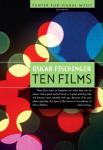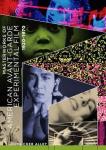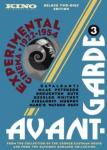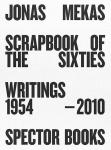Unseen Cinema: Early American Avant-Garde Film 1893-1941 premieres a comprehensive 20-program retrospective of the pre-Maya Deren inspired avant-garde film movement in America. Over 160 films in newly preserved and restored 35mm and 16mm film prints survey the hitherto unknown accomplishments of pioneer filmmakers working in the United States and abroad during the formative period of American film. The series postulates an innovative and often controversial view of experimental cinema as a product of avant-garde artists, of Hollywood directors, and of amateur movie-makers working collectively and as individuals at all levels of film production during the last decade of the 19th century and the first half of the 20th century.
Anthology Film Archives working in collaboration with 60 of the world's leading film archive collections including British Film Institute, George Eastman House, The Library of Congress, and The Museum of Modern Art, among many others, prepared preservation and restorations masters of these rare art films. Many of the films have not been available since their creation over a century ago, some have never been screened in public, and almost all have been unavailable in pristine projection prints until now.
Unseen Cinema film retrospective had its world premiere at the 23rd Moscow International Film Festival in June 2001 and its United States premiere at The Whitney Museum of American Art (July-September 2001). The films have been seen at museums, archives, universities, and theaters around the world. Over 50 venues have featured the touring programs making it one of the largest and perhaps the most viewed film retrospectives in history.
The films are available for worldwide exhibition as a complete 20 program retrospective or as individually selected single programs tailored to meet the needs of less ambitious presentations.
Disk 1: THE MECHANIZED EYE
Experiments in Technique and Form
The dynamic qualities of motion pictures are explored by cameramen and filmmakers through novel experiments in technique and form. Early cinematographers James White, "Billy" Bitzer, and Frederick Armitage display experimental shooting styles that wowed audiences. Other independent companies further image manipulation through creative staging, editing, and printing, such as a stunning three-screen film that predates Gance's Napoleon. Experiments by photographer Walker Evans, painter Emlen Etting, musician Jerome Hill, and the film collectives Nykino and Artkino record the world in a continual process of flux. A most extreme approach is realized by Henwar Rodakiewicz with Portrait of a Young Man (1925-31), a monumental study of natural and abstract motions.
18 FILMS:
5 Paris Exposition Films (1900)-James White
Eiffel Tower from Trocadero Palace (1900)
Palace of Electricity (1900)
Champs de Mars (1900)
Panorama of Eiffel Tower (1900)
Scene from Elevator Ascending Eiffel Tower (1900)
Captain Nissen Going through Whirpool Rapids, Niagra Falls (1901)-creators unknown
Down the Hudson (1903)-Frederick Armitage & A.E. Weed
The Ghost Train (1903)-creators unknown
Westinghouse Works, Panorama View Street Car Motor Room (1904)-G.W. "Billy" Bitzer
In Youth, Beside the Lonely Sea (c. 1924-25)-creators unknown
Melody on Parade (c. 1936)-creators unknown
La Cartomancienne (The Fortune Teller) (1932)-Jerome Hill
Pie in the Sky (1934-35)-Nykino: Elia Kazan, Ralph Steiner & Irving Lerner
Travel Notes (1932)-Walker Evans
Oil: A Symphony in Motion (1930-33)-Artkino: M.G. MacPherson & Jean Michelson
Poem 8 (1932-33)-Emlen Etting
Storm (1941-43)-Paul Burnford
Portrait of a Young Man (1925-31)-Henwar Rodakiewicz
Disk 2: THE DEVIL'S PLAYTHING
American Surrealism
Edwin S. Porter and other early filmmakers used bizarre sets, fantastic costumes, and magic lantern tricks to illuminate their fantasy films. American parody supplied Douglas Fairbanks with enough unusual material to produce the truly surreal When the Clouds Roll By (1919). The expressionistic Cabinet of Dr. Calagari (1919) influenced American sensibilities throughout the 1920s as seen in Beggar of Horseback (1925), The Life and Death of 9413-A Hollywood Extra (1927) and The Telltale Heart (1928). The emphasis shifted when amateurs J.S. Watson, Jr., Joseph Cornell, and Orson Welles crafted a unique variety of American surrealism on film unfettered by European concerns.
17 FILMS:
Jack and the Beanstalk (1902)-Edwin S. Porter
Dream of a Rarebit Fiend (1906)-Edwin S. Porter
The Thieving Hand (1907)-creator unknown, Vitagraph
Impossible Convicts (1905)-G.W. "Billy" Bitzer
When the Clouds Roll By (1919)-Douglas Fairbanks & Victor Fleming (excerpt)
Beggar on Horseback (1925)-James Cruze (excerpt)
The Fall of the House of Usher (1926-27)-J.S. Watson, Jr. & Melville Webber
The Life and Death of 9413: A Hollywood Extra (1927)- Robert Florey & Slavko Vorkapich
The Love of Zero (1928)-Robert Florey & William Cameron Menzies
The Telltale Heart (1928)-Charles Klein
Tomatos Another Day (1930/1933)-J.S. Watson, Jr. & Alec Wilder
The Hearts of Age (1934)- William Vance & Orson Welles
Unreal News Reels (c. 1926)-Weiss Artclass Comedies (excerpt)
The Children's Jury (c. 1938)-attributed Joseph Cornell
Thimble Theater (c. 1938)-Joseph Cornell
Carousel: Animal Opera (c. 1938)-Joseph Cornell
Jack's Dream (c. 1938)-Joseph Cornell
Disk 3: LIGHT RHYTHMS
Music and Abstraction
The rhythmic elements of cinema are explored by artists and filmmakers fascinated by the abstract qualities of light. The American authors of avant-garde classics Le Retour á la raison (1923), Ballet mécanique (1923-24), Anémic cinéma (1926), and Une Nuit sur le Mont Chauve (1934), are finally acknowledged for their seminal artistic achievements made in Europe. Pioneer abstract films by Ralph Steiner, Mary Ellen Bute, Douglass Crockwell, Dwinnell Grant, and George Morris are compared and contrasted with Hollywood montages created by Ernst Lubitsch, Slavko Vorkapich, and Busby Berkeley. For the first time on video, composer George Antheil's original 1924 score accompanies Fernand Léger and Dudley Murphy's film Ballet mécanique, a truly avant-garde cacophony of image and sound.
29 FILMS:
Le Retour à la raison (1923)-Man Ray
Ballet mécanique (1923-24)-Fernand Léger & Dudley Murphy
Anémic cinéma (1924-26)-Rrose Sélavy (Marcel Duchamp)
Looney Lens: Anamorphic People (1927)-Al Brick
Out of the Melting Pot (1927)-W.J. Ganz Studio
H20 (1929)-Ralph Steiner
Surf and Seaweed (1929-30)-Ralph Steiner
7 Vorkapich Montage Sequences (1928-37)-Slavko Vorkapich
The Furies (1934)
Skyline Dance (1928)
Money Machine (1929)
Prohibition (1929)
The Firefly- Vorkapich edit (1937)
The Firefly-MGM release version (1937)
Maytime (1937)
So This Is Paris (1926)-Ernst Lubitsch (excerpt)
Light Rhythms (1930)-Francis Bruguière & Oswell Blakeston
Une Nuit sur le Mont Chauve (Night on Bald Mountain) (1934)-Alexandre Alexeieff & Claire Parker
Rhythm in Light (1934)-Mary Ellen Bute, Ted Nemeth & Melville Webber
Synchromy No. 2 (1936)-Mary Ellen Bute & Ted Nemeth
Parabola (1937)-Mary Ellen Bute & Ted Nemeth
Footlight Parade - "By a Waterfall" (1933)-Busby Berkeley
Glen Falls Sequence (1937-46)-Douglass Crockwell
Simple Destiny Abstractions (1937-40)-Douglass Crockwell
Abstract Movies (1937-47)-George L.K. Morris
Scherzo (1939)-Norman McLaren
Themis (1940)-Dwinell Grant
Contrathemis (1941)-Dwinell Grant
1941 (1941)-Francis Lee
Moods of the Sea (1940-42)-Slavko Vorkapich & John Hoffman
Disk 4: INVERTED NARRATIVES
New Directions in Story-Telling
Early directors D.W. Griffith and Lois Weber develop the radical language of cinema narrative through audience-friendly melodramas made for nickelodeon theaters. Experimental fantasies are depicted in such independent productions as Moonland (c. 1926), Lullaby (1929), and The Bridge (1929-30). Depression era films by socially-conscious filmmakers reshape drama as demonstrated in Josef Berne's brooding Black Dawn (1933) and Strand and Hurwitz's biting Native Land (1937-41): each pictures a raw reality. Parody and satire find their mark in Theodore Huff's Little Geezer (1932) and Barlow, Hay and Le Roy's Even as You and I (1937). David Bradley's Sredni Vashtar by Saki (1940-43) boasts an inadvertent post-modern attitude.
12 FILMS:
The House with Closed Shutters (1910)-D.W. Griffith & G.W. "Billy" Bitzer
Suspense (1913)-Lois Weber & Philips Smalley
Moonland (c. 1926)-Neil McQuire & William A. O'Connor
Lullaby (1929)-Boris Deutsch
The Bridge (1929-30)-Charles Vidor
Little Geezer (1932)-Theodore Huff
Black Dawn (1933)-Josef Berne & Seymour Stern
Native Land (1937-41)-Frontier Films: Leo Hurwitz & Paul Strand (excerpt)
Black Legion (1936-7)-Nykino: Ralph Steiner & Willard Van Dyke
Even As You and I (1937)-Roger Barlow, Harry Hay & Le Roy Robbins
Object Lesson (1941)-Christoher Young
"Sredni Vashtar" by Saki (1940-43)-David Bradley
Disk 5: PICTURING A METROPOLIS
New York City Unveiled
Only Unseen Cinema DVD released as a SINGLE
The DVD depicts dynamic images of New York City and scenes of New Yorkers among the skyscrapers, streets, and night life of America's greatest city during a half century of progress, while at the same time showing changes in film style and the history of cinema experiments. Avant-garde moments pop up in the most unlikely of places including turn-of-the-twentieth-century actualities, commercial and radical newsreels, and Busby Berkeley's "Lullaby of Broadway" from Gold Diggers of 1935. Included are spectacular prints of Charles Sheeler and Paul Strand's Manhatta (1921), Robert Flaherty's Twenty-four-Dollar Island (c. 1926), Robert Florey's Skyscraper Symphony (1929), Jay Leyda's A Bronx Morning (1931), and Rudy Burckhardt's Pursuit of Happiness (1940).
26 FILMS:
The Blizzard (1899)-creators unknown
Lower Broadway (1902)-Robert K. Bonine
Beginning of a Skyscraper (1902)-Robert K. Bonine
Panorama from Times Building, New York (1905)-Wallace McCutcheon
Skyscrapers of NYC from North River (1903)-J.B. Smith
Panorama from Tower of the Brooklyn Bridge (1903)-G.W. "Billy" Bitzer
Building Up and Demolishing the Star Theatre (1902)-Frederick Armitage
Coney Island at Night (1905)-Edwin S. Porter
Interior New York Subway 14th Street to 42nd Street (1905)-G.W. "Billy" Bitzer
Seeing New York by Yacht (1902)-Frederick Armitage & A.E. Weed
2 Looney Lens: Split Skyscrapers (1924) and Tenth Avenue, NYC (1924)-Al Brick
4 Scenes from Ford Educational Weekly (1916-24)-creators unknown
Manhatta (1921)-Charles Sheeler & Paul Strand
Twentyfour-Dollar Island (c. 1926)-Robert Flaherty
Skyscraper Symphony (1929)-Robert Florey
Manhattan Medley (1931)-Bonney Powell
A Bronx Morning (1931)-Jay Leyda
Footnote to Fact (1933)-Lewis Jacobs
Seeing the World (1937)-Rudy Burckhardt
Pursuit of Hapiness (1940)-Rudy Burckhardt
Gold Diggers of 1935 - "Lullaby of Broadway" (1935)-Busby Berkeley (excerpt)
Autumn Fire (1930-33)-Herman Weinberg
Disk 6: THE AMATEUR AS AUTEUR
Discovering Paradise in Pictures
These home-made films incorporate avant-garde strategies and techniques to achieve a true sense of cinematic intimacy. Glimpses of life caught unawares are found in the home movies of Elizabeth Woodman Wright, Archie Stewart, Frank Stauffacher, and John C. Hecker. Poetic lyricism finds a voice in city symphonies: Lynn Riggs and James Hughes' A Day in Santa Fe (1931) and Rudy Burckhardt's Haiti (1938). Professionally minded films, like Theodore Case's sound tests (c. 1925) and Lewis Jacobs' Tree Trunk to Head (1938), operate from a similar home-spun perspective of sincerity. Joseph Cornell offers an enigmatic but lovely homage to childhood with Children's Trilogy (c. 1938).
20 FILMS:
7 Case Sound Tests (c. 1924-25)-Theodore Case & Earl Sponable
Windy Ledge Farm (c. 1929-34)-Elizabeth Woodman Wright
A Day in Santa Fe (1931)-Lynn Riggs & James Hughes
4 Stewart Family Home Movies (c. 1935-39)-Archie Stewart
Children's Party (c. 1938)-Joseph Cornell
Cotillion (c. 1938)-Joseph Cornell
The Midnight Party (c. 1938)-Joseph Cornell
Haiti (1938)-Rudy Burckhardt
Tree Trunk to Head (1938)-Lewis Jacobs
Bicycle Polo at San Mateo (1940-42)-Frank Stauffacher
1126 Dewey Avenue, Apt. 207 (1939)-John C. Hecker
Disk 7: VIVA LA DANCE
The Beginnings of Ciné-Dance
Dance and film have shared the aspiration to creatively sculpt motion and time. Some of the first films ever made featured Annabelle's skirt dance, hand-painted in glowing colors. Isadora Duncan and Ruth St. Denis' innovations found their way into Diana the Huntress (1916) and The Soul of the Cypress (1920). Highly cinematic renditions of dance evolved in Stella Simon's Hände (1928), Hector Hoppin's Joie de vivre (1934), and Busby Berkeley's "Don't Say Goodnight" from Wonder Bar (1934). In counterpoint, ciné-dances by Mary Ellen Bute, Douglass Crockwell, Oskar Fischinger, Norman McLaren, Ralph Steiner, and Slavko Vorkapich dispensed with actual dancers in favor of color, shape, line, and form choreographed into abstract light-play.
33 FILMS:
7 Annabelle Dances and Dances (1894-1897)-W.K.L. Dickson, William Heise & James White
Davy Jones' Locker (1900)-Frederick Armitage
Neptune's Daughters (1900)-Frederick Armitage
A Nymph of the Waves (1900)-Frederick Armitage
Diana the Huntress (1916)-Charles Allen & Francis Trevelyan Miller (excerpt)
The Soul of the Cypress (1920)-Dudley Murphy
Looney Lens: Pas de deux (1924)-Al Brick
Hände: Das Leben und die Liebe eines Zärtlichen Geschlechts (Hands: The Life and Loves of the Gentler Sex) (1928)-Stella Simon & Miklos Bandy
Mechanical Principles (1930)-Ralph Steiner
Tilly Losch in Her Dance of the Hands (c. 1930-33)-Norman Bel Geddes
2 Eisenstein's Mexican Footage (1931)-Sergei Eisenstein (excerpts)
Oramunde (1933)-Emlen Etting
Hands (1934)-Ralph Steiner & Willard Van Dyke
Joie de vivre (1934)-Anthony Gross & Hector Hoppin
Wonder Bar: "Don't Say Goodnight" (1934)-Busby Berkeley (excerpt)
Dada (1936)-Mary Ellen Bute & Ted Nemeth
Escape (1938)-Mary Ellen Bute & Ted Nemeth
An Optical Poem (1938)-Oskar Fischinger
Abstract Experiment in Kodachrome (c. 1940s)-Slavko Vorpapich
NBC Valentine Greeting (1939-40)-Norman McLaren
Stars and Stripes (1940)-Norman McLaren
Tarantella (1940)-Mary Ellen Bute, Ted Nemeth & Norman McLaren
Spook Sport (1940)-Mary Ellen Bute, Ted Nemeth & Norman McLaren
Danse Macabre (1922)-Dudley Murphy
Peer Gynt (1941)-David Bradley, starring Charlton Heston (excerpt)
Introspection (1941/46)-Sara Kathryn Arledge














Add new comment